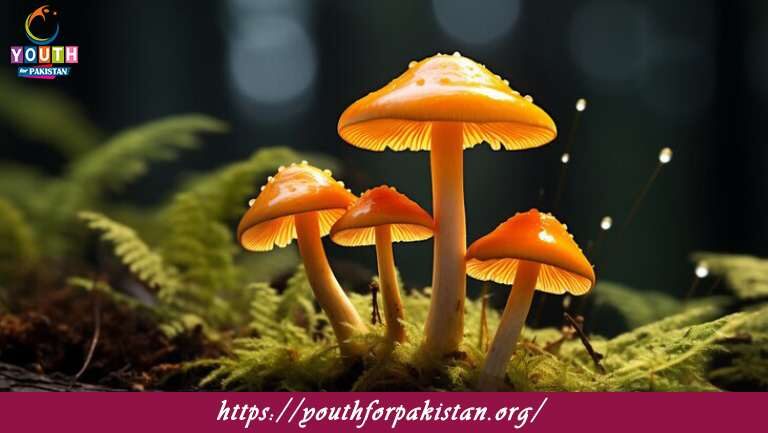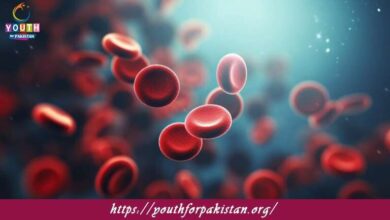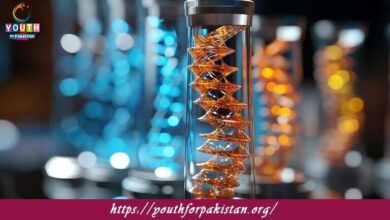11th Class Biology Chapter 8 MCQs with Answers

11th Class Biology Chapter 8 MCQs focusing on fungal characteristics, reproduction, and their ecological and industrial roles. These targeted questions simplify complex concepts for 11th Class Biology students, ensuring better exam readiness.
Which of the following is not a characteristic of fungi?
a) Photosynthesis
b) Chitin cell walls
c) Heterotrophic
d) Spore production
The primary mode of nutrition for fungi is:
a) Autotrophic
b) Heterotrophic
c) Parasitic
d) Predatory
Fungi obtain their nutrients through:
a) Photosynthesis
b) Absorption
c) Ingestion
d) Predation
Fungi play a crucial role in ecosystems as:
a) Producers
b) Decomposers
c) Predators
d) Parasites
The body of a multicellular fungus is known as:
a) Mycelium
b) Hypha
c) Spore
d) Gametangium
The thread-like structures that make up the body of a fungus are called:
a) Mycelium
b) Hyphae
c) Spores
d) Stomata
Fungi reproduce asexually by producing:
a) Seeds
b) Spores
c) Eggs
d) Fruits
The spore-producing structures found in fungi are called:
a) Hyphae
b) Mycelium
c) Fruiting bodies
d) Rhizoids
The fusion of cytoplasm and nuclei from two different mating types is known as:
a) Budding
b) Conjugation
c) Meiosis
d) Plasmogamy
The sexual reproductive structures of fungi are involved in:
a) Asexual reproduction
b) Spore dispersal
c) Gamete formation
d) Conjugation
Fungi are classified under which domain?
a) Archaea
b) Bacteria
c) Eukarya
d) Protista
Which of the following fungal diseases affects the skin, hair, and nails of humans and animals?
a) Ringworm
b) Athlete’s foot
c) Yeast infection
d) Malaria
Yeast is a type of fungus that is used in the process of:
a) Photosynthesis
b) Fermentation
c) Respiration
d) Reproduction
Fungi reproduce both sexually and asexually, which provides them with:
a) Genetic diversity
b) Higher mutation rates
c) Longer lifespans
d) Immunity to diseases
The reproductive cells of fungi that are capable of growing into new individuals are called:
a) Zygotes
b) Gametes
c) Spores
d) Seeds
Mycorrhizal fungi form a mutualistic association with:
a) Plants
b) Bacteria
c) Animals
d) Other fungi
The symbiotic relationship between fungi and plants benefits the plants by:
a) Causing diseases
b) Providing nutrients and water
c) Competing for resources
d) Parasitizing the roots
Fungi are vital in breaking down complex organic matter, such as dead plants and animals, through the process of:
a) Photosynthesis
b) Respiration
c) Fermentation
d) Decomposition
Which of the following fungi is commonly used in baking and brewing?
a) Penicillium
b) Aspergillus
c) Saccharomyces
d) Rhizopus
The antibiotic penicillin is produced by the fungus:
a) Aspergillus
b) Saccharomyces
c) Rhizopus
d) Penicillium
Fungi can cause diseases in humans, animals, and plants and are responsible for illnesses such as:
a) Malaria
b) Influenza
c) Ringworm
d) Diabetes
The fungal infection that affects the lungs and can be life-threatening in immunocompromised individuals is:
a) Athlete’s foot
b) Candidiasis
c) Aspergillosis
d) Thrush
The process of asexual reproduction in fungi involves the formation of:
a) Spores
b) Gametes
c) Zygotes
d) Seeds
Which of the following fungi is used in the production of soy sauce and miso?
a) Penicillium
b) Aspergillus
c) Rhizopus
d) Saccharomyces
Fungi are essential in the process of nutrient cycling because they:
a) Fix nitrogen in the soil
b) Produce oxygen during photosynthesis
c) Decompose organic matter
d) Form symbiotic relationships with animals
Fungi have a role in the synthesis of certain pharmaceuticals and antibiotics, which benefits:
a) Humans
b) Animals
c) Plants
d) Insects
The body of a fungus is primarily composed of a network of:
a) Hyphae
b) Spores
c) Seeds
d) Rhizoids
The group of fungi known as lichens form a mutualistic association between:
a) Fungi and animals
b) Fungi and plants
c) Fungi and bacteria
d) Fungi and algae or cyanobacteria
Lichens are important indicators of environmental health because they are sensitive to changes in:
a) Temperature
b) Humidity
c) Pollution levels
d) Altitude
Fungi are classified into different phyla based on their:
a) Reproductive structures
b) Mode of nutrition
c) Cell wall composition
d) Spore color
The process of sexual reproduction in fungi involves the fusion of:
a) Hyphae
b) Spores
c) Gametes
d) Mycelium
The group of fungi known as “club fungi” includes:
a) Mushrooms and toadstools
b) Yeasts and molds
c) Rusts and smuts
d) Lichens and mycorrhizae
Fungi can reproduce asexually by producing structures called:
a) Seeds
b) Flowers
c) Spores
d) Fruits
The group of fungi known as “sac fungi” includes:
a) Mushrooms and toadstools
b) Yeasts and molds
c) Rusts and smuts
d) Lichens and mycorrhizae
The mutualistic association between fungi and plant roots is called:
a) Mycorrhizae
b) Lichens
c) Fruiting bodies
d) Conidia
The group of fungi known as “imperfect fungi” is characterized by their:
a) Lack of sexual reproduction
b) Absence of hyphae
c) Ability to photosynthesize
d) Formation of large fruiting bodies
The spore-producing structures found in mushrooms are called:
a) Hyphae
b) Mycelium
c) Fruiting bodies
d) Rhizoids
The fungal disease that affects cereal crops and causes a loss in yield is known as:
a) Rust
b) Ringworm
c) Aspergillosis
d) Athlete’s foot
The unique sugar found in fungal cell walls is:
a) Cellulose
b) Starch
c) Lignin
d) Chitin
The formation of a mycorrhizal association enhances the plant’s ability to absorb:
a) Oxygen
b) Water and minerals
c) Carbon dioxide
d) Sunlight
The fungal disease that affects the lungs and can be life-threatening in immunocompromised individuals is:
a) Athlete’s foot
b) Candidiasis
c) Aspergillosis
d) Thrush
The process of asexual reproduction in fungi involves the formation of:
a) Spores
b) Gametes
c) Zygotes
d) Seeds
Which of the following fungi is used in the production of soy sauce and miso?
a) Penicillium
b) Aspergillus
c) Rhizopus
d) Saccharomyces
Fungi are essential in the process of nutrient cycling because they:
a) Fix nitrogen in the soil
b) Produce oxygen during photosynthesis
c) Decompose organic matter
d) Form symbiotic relationships with animals
Fungi have a role in the synthesis of certain pharmaceuticals and antibiotics, which benefits:
a) Humans
b) Animals
c) Plants
d) Insects
The body of a fungus is primarily composed of a network of:
a) Hyphae
b) Spores
c) Seeds
d) Rhizoids
The group of fungi known as lichens form a mutualistic association between:
a) Fungi and animals
b) Fungi and plants
c) Fungi and bacteria
d) Fungi and algae or cyanobacteria
Lichens are important indicators of environmental health because they are sensitive to changes in:
a) Temperature
b) Humidity
c) Pollution levels
d) Altitude
Fungi are classified into different phyla based on their:
a) Reproductive structures
b) Mode of nutrition
c) Cell wall composition
d) Spore color
The process of sexual reproduction in fungi involves the fusion of:
a) Hyphae
b) Spores
c) Gametes
d) Mycelium
The group of fungi known as “club fungi” includes:
a) Mushrooms and toadstools
b) Yeasts and molds
c) Rusts and smuts
d) Lichens and mycorrhizae
Fungi can reproduce asexually by producing structures called:
a) Seeds
b) Flowers
c) Spores
d) Fruits
The group of fungi known as “sac fungi” includes:
a) Mushrooms and toadstools
b) Yeasts and molds
c) Rusts and smuts
d) Lichens and mycorrhizae
The mutualistic association between fungi and plant roots is called:
a) Mycorrhizae
b) Lichens
c) Fruiting bodies
d) Conidia
The group of fungi known as “imperfect fungi” is characterized by their:
a) Lack of sexual reproduction
b) Absence of hyphae
c) Ability to photosynthesize
d) Formation of large fruiting bodies
The spore-producing structures found in mushrooms are called:
a) Hyphae
b) Mycelium
c) Fruiting bodies
d) Rhizoids
The fungal disease that affects cereal crops and causes a loss in yield is known as:
a) Rust
b) Ringworm
c) Aspergillosis
d) Athlete’s foot
The unique sugar found in fungal cell walls is:
a) Cellulose
b) Starch
c) Lignin
d) Chitin
The formation of a mycorrhizal association enhances the plant’s ability to absorb:
a) Oxygen
b) Water and minerals
c) Carbon dioxide
d) Sunlight
The fungal disease that affects the lungs and can be life-threatening in immunocompromised individuals is:
a) Athlete’s foot
b) Candidiasis
c) Aspergillosis
d) Thrush
If you are interested to enhance your knowledge regarding Physics, Chemistry, Biology, and Computer please click on the link of each category, you will be redirected to dedicated website for each category.





